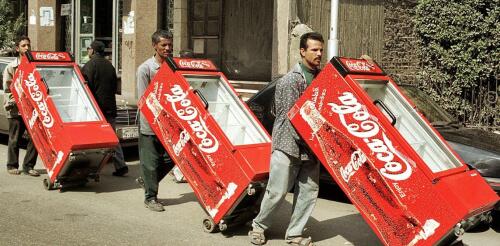Consumption
About 10 years ago, a very thick book written by a French economist became a surprising bestseller. It was called “Capital in the 21st Century.” In it, Thomas Piketty traces the history of income and wealth inequality over the past couple of hundred years. The book’s insights struck a chord with people who felt a growing sense of economic inequality but didn’t have the data to back it up. I was one of them. It made me wonder, how much carbon pollution is being generated to create wealth for a small group of extremely rich households? Two kids, 10 years and a Ph.D. later, I finally have some answers. In a new study, colleagues and I investigated U.S. households’ personal responsibility for greenhouse gas emissions from 1990 to 2019. We previously studied emissions tied to consumption – the stuff people buy. This time, we looked at emissions used in generating people’s incomes, including investment income. If you’ve ever thought abo...
You’ve just finished a cup of coffee at your favorite cafe. Now you’re facing a trash bin, a recycling bin and a compost bin. What’s the most planet-friendly thing to do with your cup? Many of us would opt for the recycling bin – but that’s often the wrong choice. In order to hold liquids, most paper coffee cups are made with a thin plastic lining, which makes separating these materials and recycling them difficult. In fact, the most sustainable option isn’t available at the trash bin. It happens earlier, before you’re handed a disposable cup in the first place. In our research on waste behavior, sustainability, engineering design and decision making, we examine what U.S. residents understand about the efficacy of different waste management strategies and which of those strategies they prefer. In two nationwide surveys in the U.S. that we conducted in October 2019 and March 2022, we found that people overlook waste reduction and reuse...
Coca-Cola is one of the world’s most widely recognized brands. Its global reach, spanning more than 200 countries, was the theme of a 2020 commercial that showed families drinking Coke with their meals in cities from Orlando, Florida, to Shanghai, London, Mexico City and Mumbai, India. Operating on that scale creates a big carbon footprint. The company uses over 200,000 vehicles to distribute its products every day and runs hundreds of bottling plants and syrup factories across the globe. But Coke’s single largest contribution to climate change comes from its refrigeration equipment. Running refrigerators uses a lot of electricity, and some coolants in these systems are greenhouse gases that trap heat in the atmosphere. Almost two-thirds of the climate impact of refrigeration comes from electricity consumption, and refrigerants account for the rest. As of 2020, refrigeration produced nearly 8% of global greenhouse gas emissions....


